Text
Chemically sterilized...or mechanically sterilized?
It is clear that applying chemicals to your yard and landscape, be it fertilizers, weed killers, or pesticides, has devastating effects to the community of life that is present in every place.
But is the terrifying decline in insects explainable by chemicals alone?
When i am in mowed environments, even those that I know have no lawn chemicals, they are almost entirely empty of life. There are a few bees and other insects on the dandelions, but not many, and the only birds I see are American robins, Grackles, and European starlings.
Even without any weed killers at all, regular mowing of a lawn type area eliminates all but a few specially adapted weeds.
The plants of a lawn where I live include: Mouse ear chickweed, Birds-eye Speedwell, Common blue violet, Dandelion, Wild Garlic, Creeping charlie, White Clover, Black Medick, Broad-leaved plantain, Mock Strawberry, Crabgrass, Small-flowered Buttercup, Ribwort Plantain, Daisy Fleabane, a few common sedges, Red Deadnettle...That sounds like a lot of plants, but the problem is, almost all of them are non-native species (Only Violets, Daisy Fleabane, and the sedges are native!) and it's. The Same. Species. Everywhere. In. Every. Place.
How come...? Because mowed turf is a really specific environment that is really specifically beneficial to a number of almost entirely European plants, and presents stressors that most plants (including almost all native north american plants) simply can't cope with.
The plants mentioned above are just the flowering weeds. The grasses themselves, the dominant component of the lawn, are essentially 100% invasive in North America, many of them virulently and destructively invasive.
Can you believe that Kentucky bluegrass isn't even native to Kentucky? Nope, it's European! The rich pasture of the Bluegrass region of Kentucky was predominantly a mix of clover, other legumes, and bamboo. The clovers—Kentucky clover, Running buffalo clover, and buffalo clover—are highly endangered now (hell, kentucky clover wasn't even DISCOVERED until 2013) and the bamboo—Giant rivercane, Arundinaria gigantea—has declined in its extent by 98%. Do European white and red clovers fulfill the niches that native clovers once did? Dunno, probably not entirely.
One of the biggest troubles with "going native" is that North America legitimately does not have native grass species that really fill the niche of lawn. Most small, underfoot grassy plants are sedges and they are made for shady environments, and they form tufts and fancy sprays, not creeping turf. Then there's prairie grasses which are 10 feet tall.
What this means, though, is that lawns don't even remotely resemble environments that our insects and birds evolved for. Forget invasive species, lawns are an invasive BIOME.
It's a terrible thing, then, that this is just what we do to whatever random land we don't cover in concrete: back yards, road margins, land outside of churches and businesses, spaces at the edges of fields, verges at bypasses and gas stations...
Mowing, in the north american biomes, selects for invasive species and promotes them while eliminating native species. There's no nice way to put it. The species that thrive under this treatment are invasive.
And unfortunately mowing is basically the only well-known and popular tool even for managing meadow and prairie type "natural" environments. If you want to prevent it from succeeding to forest, just mow it every couple of years.
This has awful results, because invasive species like Festuca arundinacea (a plant invented by actual Satan) love it and are promoted, and the native species are harmed.
Festuca arundinacea, aka Tall Fescue, btw is the main grass that you'll find in cheap seed mixes in Kentucky, but it's a horrific invasive species that chokes everything and keeps killing my native meadow plants. It has leaves like razor blades (it's cut me so deeply that it scarred) and has an endosymbiont in it that makes horses that eat it miscarry their foals.
And this stuff is ALL OVER the "prairie" areas where I work, like it's the most dominant plant by far, because it thrives on being mowed while the poor milkweeds, Rattlesnake Master and big bluestems slowly decline and suffer.
It's wild how hard it is to explain that mowing is a very specific type of stressor that many plants will respond very very negatively to. North American plants did not evolve under pressures that involved being squished, crushed, snipped to 8 inches tall uniformly and covered in a suffocating blanket of shredded plant matter. That is actually extremely bad for many of the prairie plants that are vital keystone species. Furthermore it does not control invasive species but rather promotes them.
Native insects need native plant cover. Many of them co-evolved intimately with particular host plants. Many others evolved to eat those guys. And Lord don't get me started on leaf removal, AKA the greatest folly of all humankind.
So wherever there is a mowed environment, regardless of the use of chemicals or not, the bugs don't have the structural or physical habitat characteristics they evolved for and they don't have the plant species they evolved to be dependent on.
Now let's think about three-dimensional space.
This post was inspired when I saw several red winged blackbirds in the unmowed part of a field perching on old stems of Ironweed and goldenrod. The red-winged blackbirds congregated in the unmowed part of the field, but the mowed part was empty. The space in a habitat is not just the area of the land viewed from above as though on a map. Imagine a forest, think of all the squirrels and birds nesting and sitting on branches and mosses and lichens covering the trunks and logs. The trees extend the habitat space into 3 dimensions.
Any type of plant cover is the same. A meadow where the plants grow to 3 feet tall, compared with a lawn of 6 inches tall, not only increases the quality of the habitat, it really multiplies the total available space in the habitat, because there is such a great area of stems and leaves for bugs and birds to be on. A little dandelion might form a cute little corner store for bugs, A six foot tall goldenrod? That's a bug skyscraper! It fits way more bugs.
It's not just the plants themselves, it's the fallen leaves that get trapped underneath them—tall meadow plants seem to gather and hoard fallen leaves underneath. More tall plants is also more total biomass, which is the foundation of the whole food chain!
Now consider light and shade. Even a meadow of 3ft tall plants actually shades the ground. Mosses grow enthusiastically even forming thick mats where none at all could grow in the mowed portions. And consider also amphibians. They are very sensitive to UV light, so even a frog that lives in what you see as a more "open" environment, can be protected by some tall flowers and rushes but unable to survive in mowed back yard
867 notes
·
View notes
Text
Hugelkultur Part 2/2
Lol sooooo this flopped pretty hard. See part 1 for pictures and such. Basically I wasn't able to fill up the bed with enough soil, which is mostly a time and financial issue at the moment. So no plants can take there since the soil layer isn't deep enough. Luckily I didn't buy anything to plant there, I just transplanted random stuff from my yard that would've otherwise been torn down. But hey, now I know where some mistakes were made haha. My plan at this point is to keep layering dirt, leaf litter, and fresh plant clippings as I get them until it's an actually solid bed, and then maybe start using it next year. I don't really have the resources or energy right now to start a garden anyways so I think this is fine.
6 notes
·
View notes
Text
Lol those hugelkultur beds are NOT going well lolol, I'll post an update later as to why
1 note
·
View note
Text
Girls will be like “oh I’m just running quick some errands” and then spend all day in the wetlands appreciating the unique flora and fauna
10K notes
·
View notes
Text
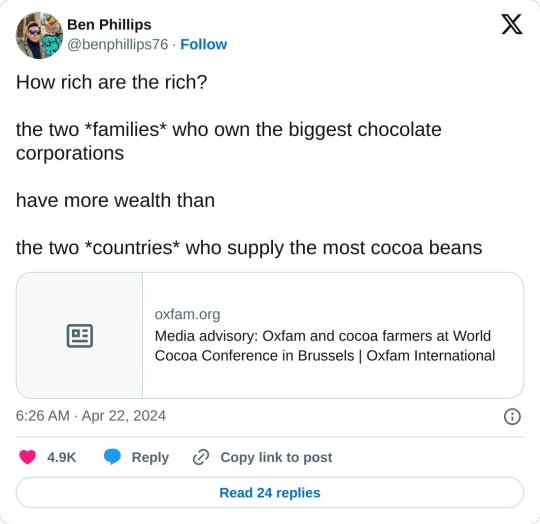
Lindt, Mondelēz, and Nestlé together raked in nearly $4 billion in profits from chocolate sales in 2023. Hershey’s confectionary profits totaled $2 billion last year.
The four corporations paid out on average 97 percent of their total net profits to shareholders in 2023.
The collective fortunes of the Ferrero and Mars families, who own the two biggest private chocolate corporations, surged to $160.9 billion during the same period. This is more than the combined GDPs of Ghana and Ivory Coast, which supply most cocoa beans.
Decades of low prices have made farmers poorer and hampered their ability to hire workers or invest in their farms, limiting bean yield. Old cocoa trees are particularly vulnerable to disease and extreme weather. Many farmers are abandoning cocoa for other crops, or selling their land to illegal miners.
3K notes
·
View notes
Text
Y'all wanna see some bonkers stuff my professor showed us earlier
youtube
Now, on that note, do you wanna see a moth get obliterated by a small drone?
youtube
2 notes
·
View notes
Text
I don't mow my lawn (except weed whacking tall things to keep within city regulation) and my lawn is filled with so many nice low growing flowers now 🥹😭 yellow and pink woodsorrel, blue eyed grasses, lyreleaf sage, rockbells...
5 notes
·
View notes
Text
9K notes
·
View notes
Text
Me: okay we can't spend any money for a while because things have been a bit rough
Also me, pulling out $50 cash for a native plant sale: 😏
#y'all i reserved some swamp milkweed and maypops for pick up >:)#and a dogwood tree and a beautyberry bush hehe
3 notes
·
View notes
Text
I tried to move a black nightshade plant in my yard to another location because it was growing on a stump I have to remove and now it's wilting really badly 😭😭😭 it was the only nightshade in my yard. All the fresh berries were eaten off tho so hopefully the birds will spread them and another will crop up... Farewell sweet traveller
I also moved some partridgeberries to one of the hugelkultur beds. Let's hope they take and give some cover to the soil
3 notes
·
View notes
Text

"The mortality rate of caterpillars is staggering. Some experts believe it hovers around 99% for many species. They are nature's hotdogs and seemingly everyone wants a bite. Birds and other insects are especially voracious predators."
NATURE'S HOTDOGS
19K notes
·
View notes
Text
just for fun, a compilation of every wasp species I've seen drink from the pond so far.
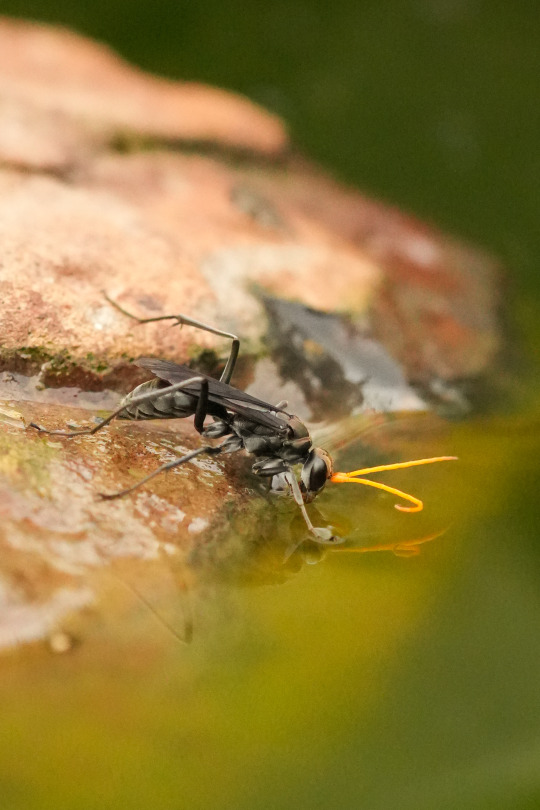
Spider Wasp, genus Fabriogenia.

Potter Wasp, subfamily Eumeninae.

Potter Wasp, genus Paralastor.

Square-headed Wasp, subfamily Crabroninae.

Vase-cell Mud-dauber Wasp, Sceliphron formosum.

Square-headed Wasp, genus Pison.

Australian Paper Wasp, Polistes humilis.
1K notes
·
View notes
Text
Honeysuckle Cordial Part 1/?

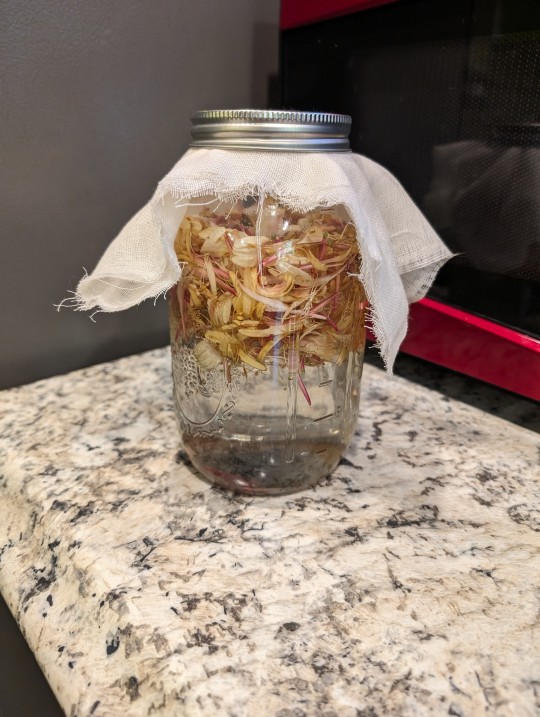
There's a couple honeysuckle bushes in our yard. I want to remove them eventually because they're invasive, but I don't really have the time for that right now. So I'm going to go ahead and use them and worry about removing them later! @xitongsblog mentioned that honeysuckle can be used in recipes, so I thought I'd give it a try. I found a recipe for a honeysuckle cordial, basically a fermented soda. I've only ever fermented kimchi before so idk how well it'll turn out, but I'll keep y'all updated.
For some reason the link to the recipe is broken so I can't share it. But I did take a screenshot before I lost it, here's the recipe:
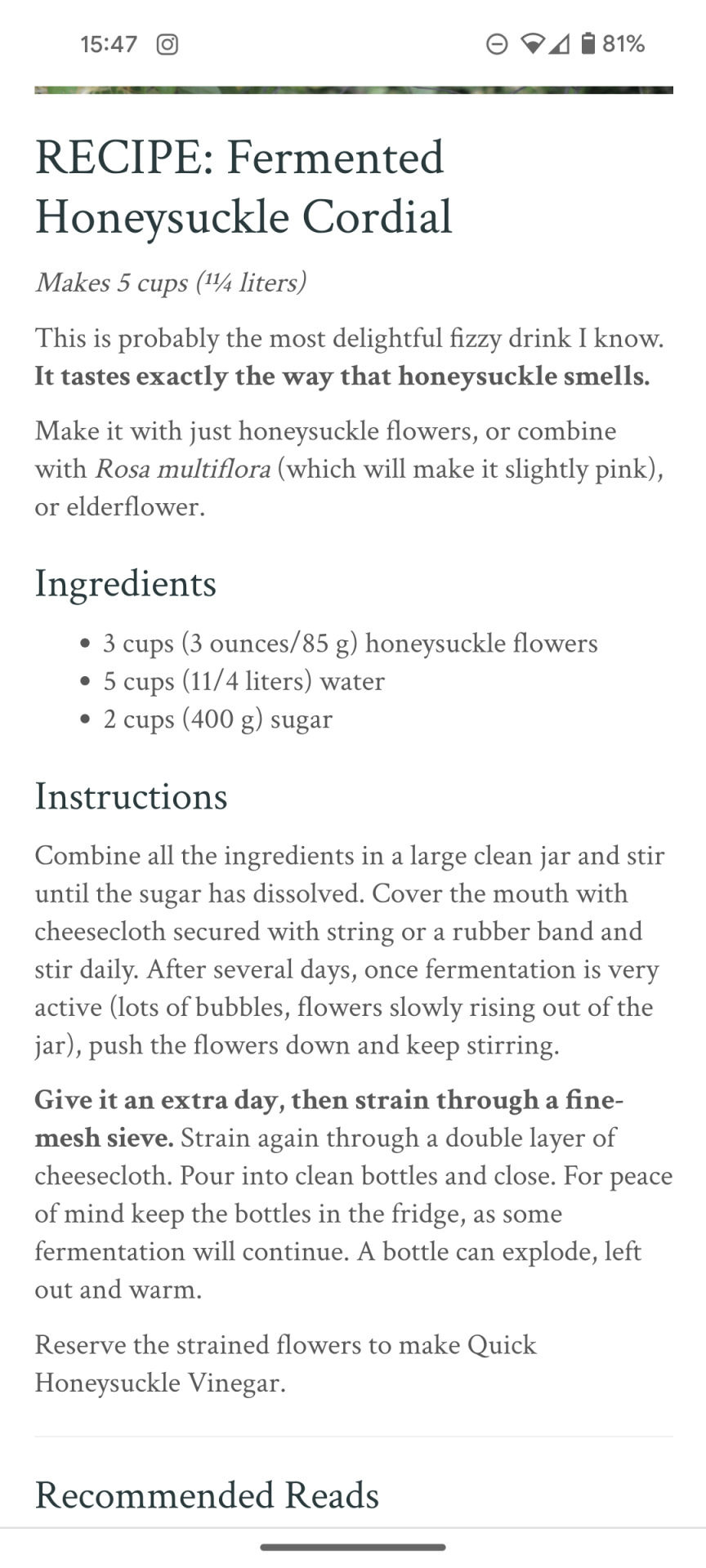
18 notes
·
View notes
Text
Stump Hugelkultur part 1/?
So we got a city ordinance violation for having a bunch of fallen trees, logs, and stumps in our yard 🤪 I'm not happy because we don't have the time or money really right now and it's literally 7 medium to large trees worth of wood to clear up. But we have a month deadline so here we go I guess.
Of course being me I don't want to pull up a stump or try to decay it under a tarp, so I'm attempting to make hugelkultur beds on them instead. If you don't know what that is, here's a diagram explanation.
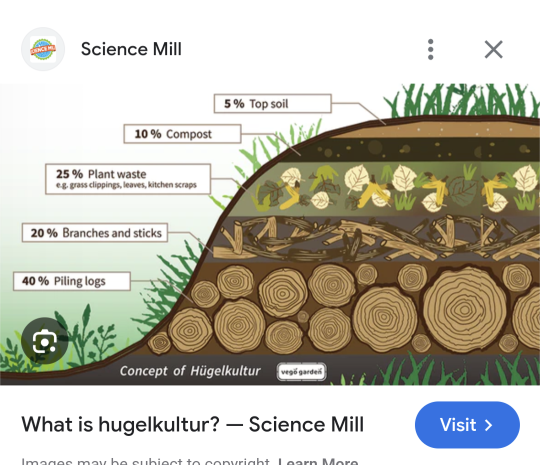
What I'm doing isn't really the traditional method because 1) I need it to look nicer so that we don't get slammed for just burying the stumps, and 2) it looks like normally hugelkultur is done with logs rather than stumps. So really I'm doing a hugelkultur inspired raised garden around a stump. Here's where we're at so far


Above is the one that's farthest along. Tomorrow I'm going to put top soil over it, but for the time being I just covered it with cardboard so that the wind doesn't blow the grass away. While I don't want to spend more money rn cuz we just bought a chainsaw, there is a native plant sale nearby in the next couple days that will be cheaper than going to a nursery. So I'm going to go and try to make this a native pollinator garden.
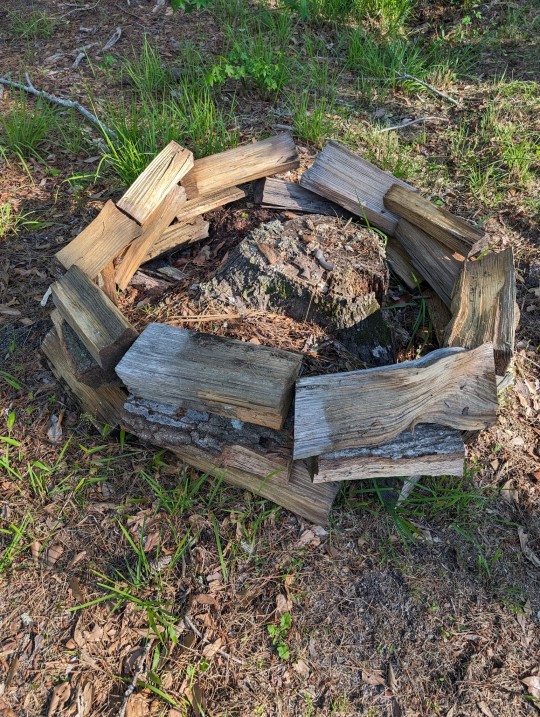

And here's two others in the works right now that haven't been buried in sticks and leaves yet. I think we have 2 more stumps after this to hide, so we kinda will end up with 5 random raised garden circles. Not what I expected to do with this yard but do what you gotta do to decay a stump I guess haha
18 notes
·
View notes
Text
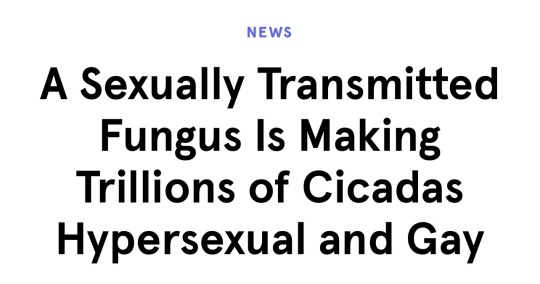
those cicadas about to have the time of their lives
16K notes
·
View notes
Text
I'll take some pics and make a more thorough post about it later, but we need to remove/hide some stumps from our yard because they're apparently city ordinance violations. I'm going to try to turn them into knockoff hugelkultur beds
1 note
·
View note
